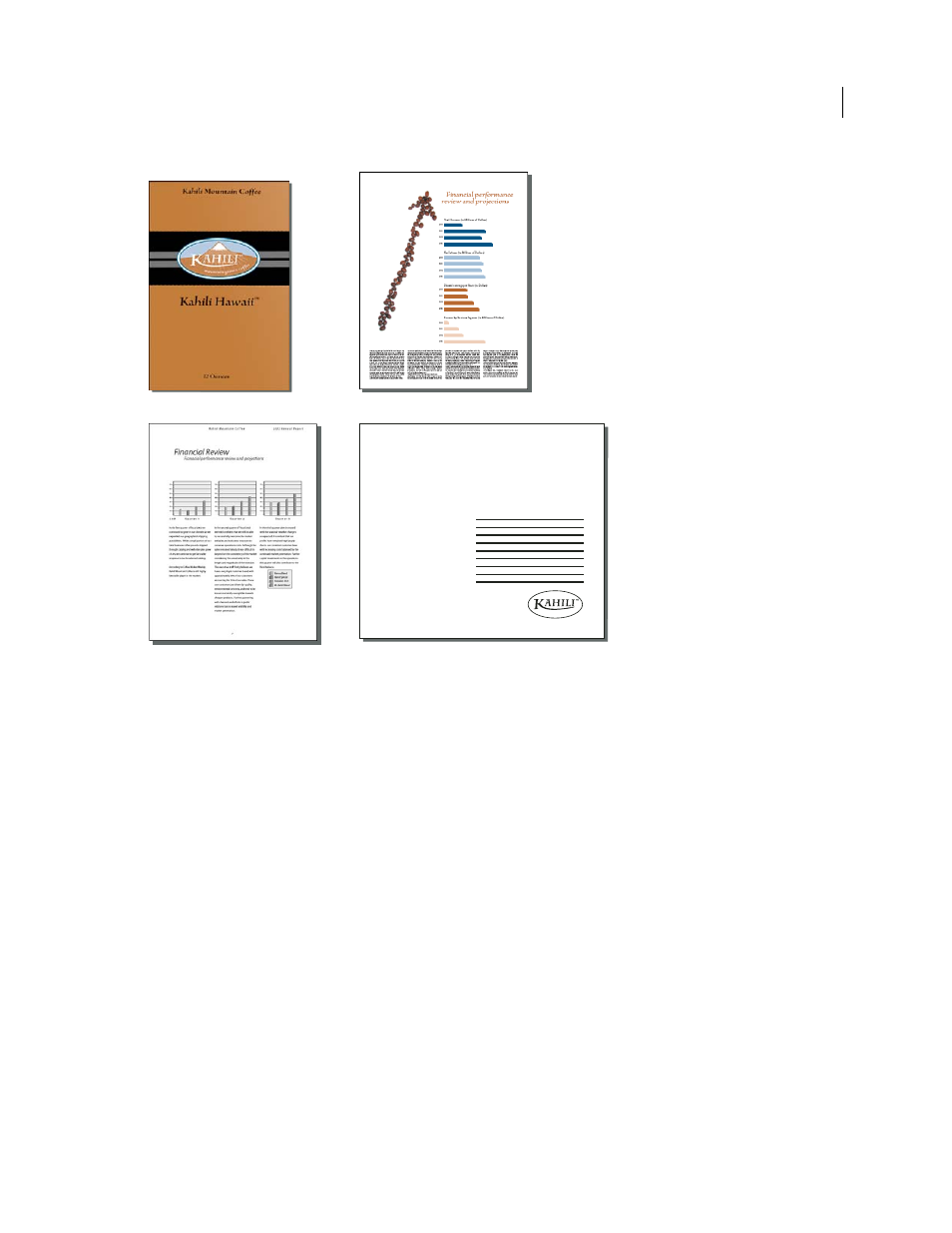Kahili mountain coffee – Adobe Acrobat 9 PRO Extended User Manual
Page 118

112
USING ACROBAT 9 PRO EXTENDED
Creating PDFs
Last updated 9/30/2011
Suitable compression methods for different art types
A. ZIP B. JPEG C. CCITT D. Run Length
You can choose from the following compression methods:
ZIP
Works well on images with large areas of single colors or repeating patterns, and for black-and-white images that
contain repeating patterns. Acrobat supports only 8-bit ZIP compression, which is lossless; that is, data is not removed
to reduce file size, so image quality is not affected.
Note: Adobe implementation of the ZIP filter is derived from the zlib package of Jean-loup Gailly and Mark Adler, whose
generous assistance we gratefully acknowledge.
JPEG
Suitable for grayscale or color images, such as continuous-tone photographs. JPEG is lossy, which means that it
removes image data and may reduce image quality; however, it attempts to reduce file size with the minimum loss of
information. Because JPEG compression eliminates data, it can achieve much smaller file sizes than ZIP compression.
CCITT
Available only for monochrome bitmap images. CCITT (Consultative Committee on International Telegraphy
and Telephony) compression is appropriate for black-and-white images and any images scanned with an image depth
of 1 bit. Group 4 is a general-purpose method that produces good compression for most monochrome images.
Group
3, used by most fax machines, compresses monochrome images one row at a time.
Run Length
Produces the best results for images that contain large areas of solid white or black.
A
C
D
Sales Plan
Kahili Mountain Coffee
B
